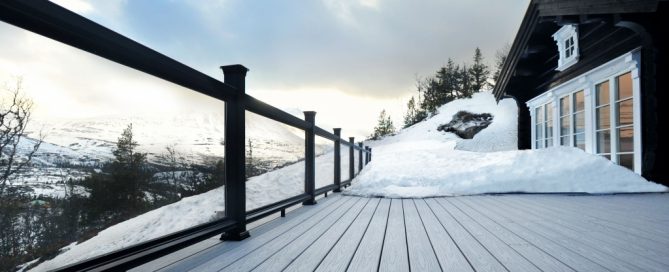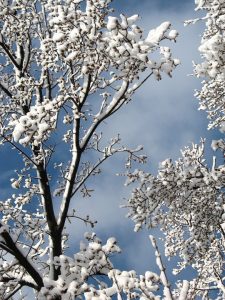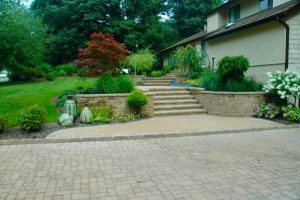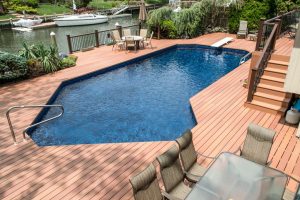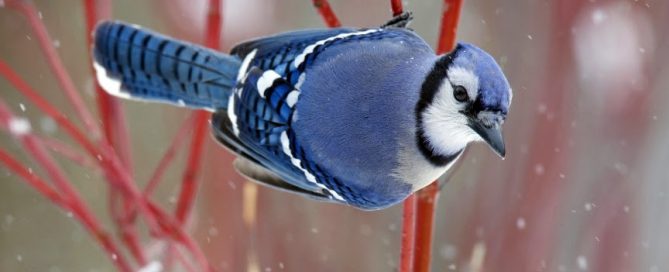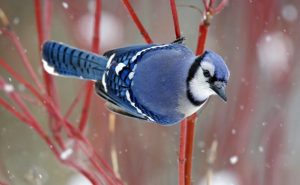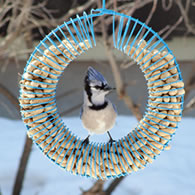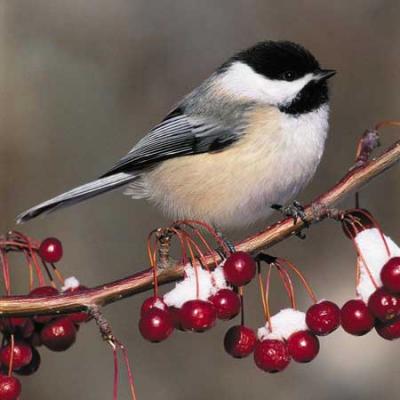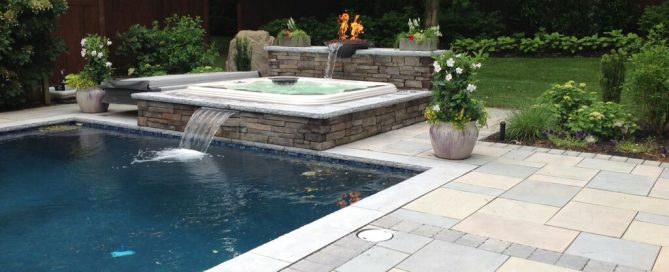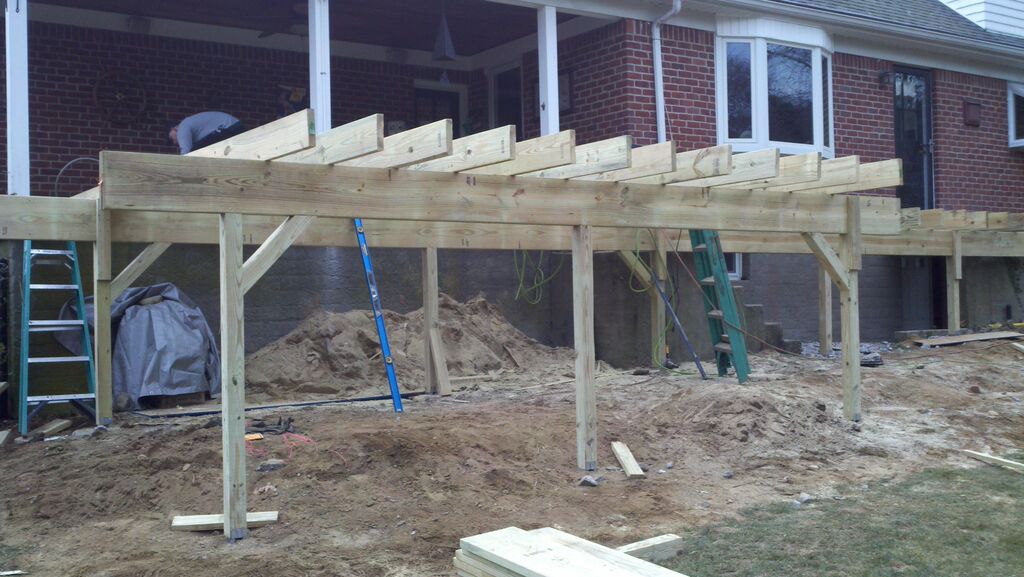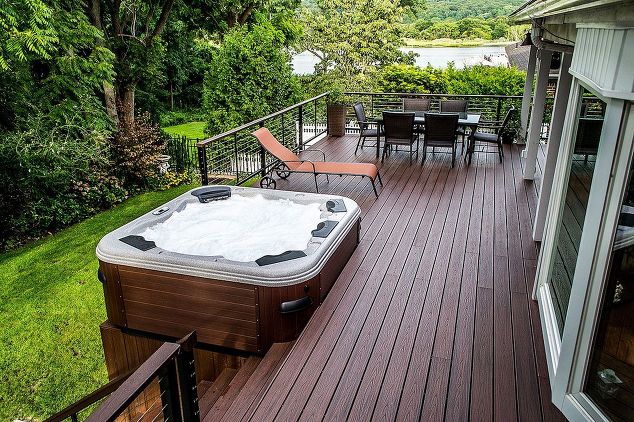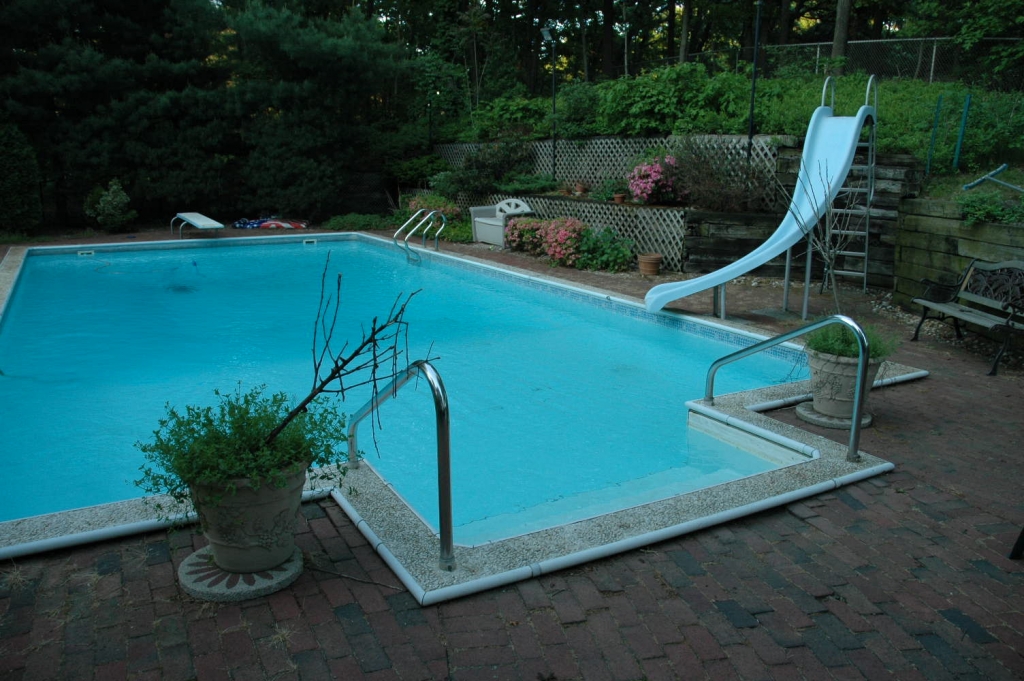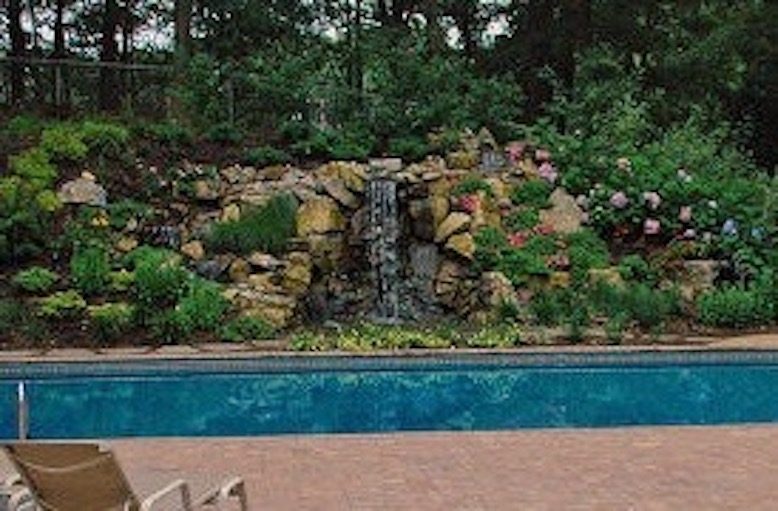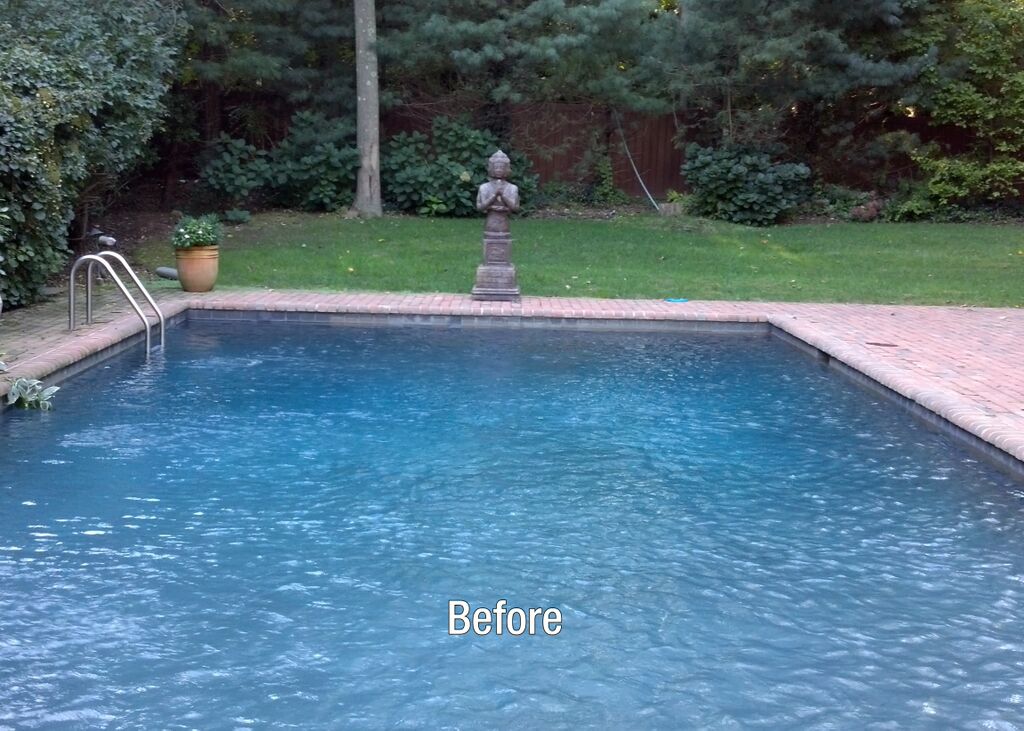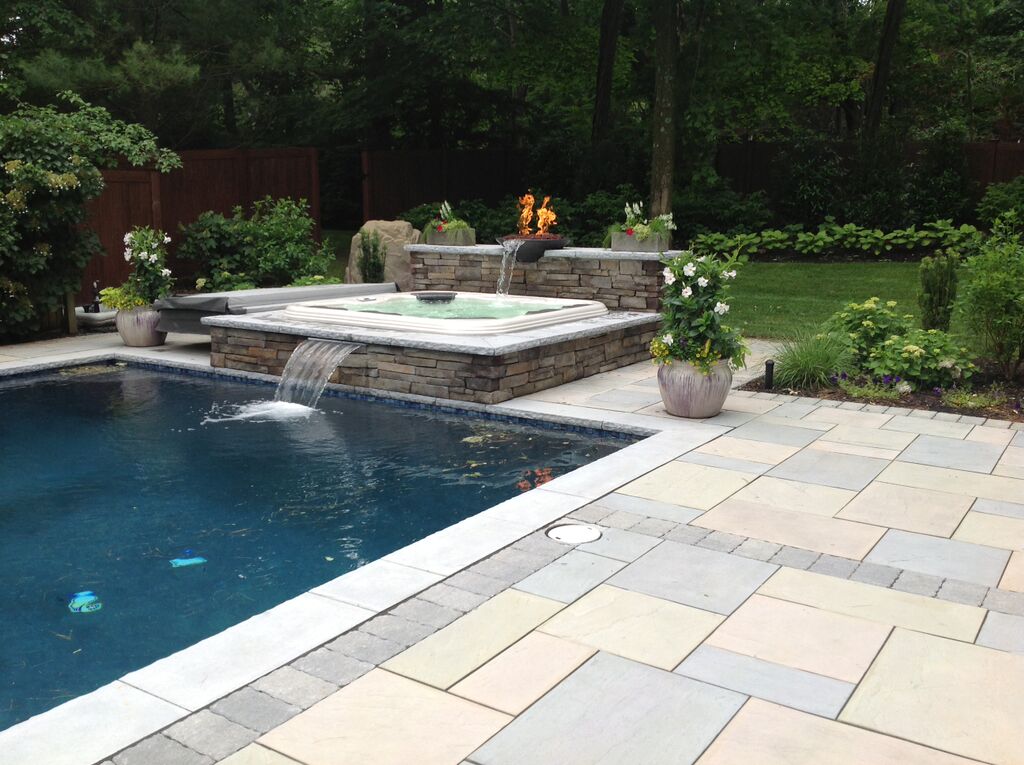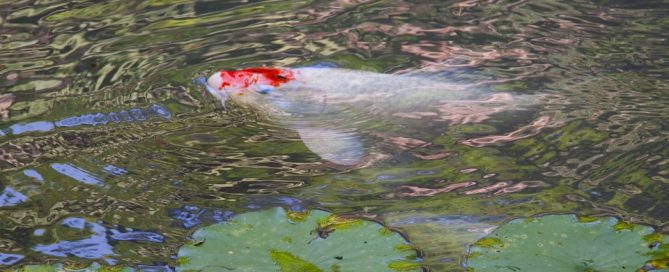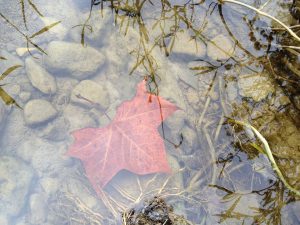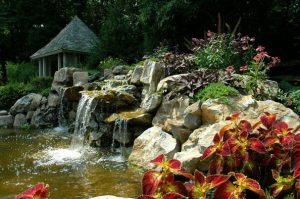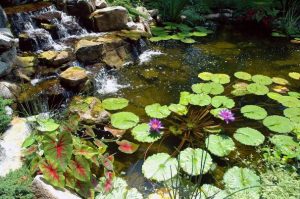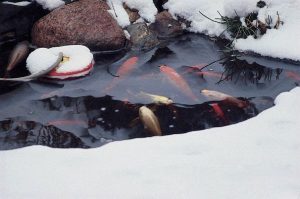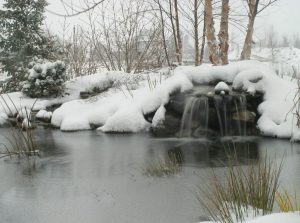Winter-Friendly Construction Products: Let It Snow, Let It Snow, Let It Snow
The Northeast faces weather changes from season to season, and year to year.
And this year, on Long Island at least, with but one brief encounter of snow under our belts, winter may seem still far away.
Yet, winter snow will eventually break through all the sunshine — if not this year, certainly in the years to come.
That causes us at Deck and Patio to continue to value construction products for their durability as well as their aesthetics.
Let’s look at two great examples of such products.
Techo-Bloc Construction Materials
 Engineered in Canada where they require extra strength due to the country’s extreme weather changes, Techo-Bloc pavers handle well the freeze/thaw that occurs in our corner of the Northeast.
Engineered in Canada where they require extra strength due to the country’s extreme weather changes, Techo-Bloc pavers handle well the freeze/thaw that occurs in our corner of the Northeast.
“As long as these pavers are properly installed, the stones will remain adaptable, even, and stable for years,” says Deck and Patio owner, Dave Stockwell.
The joints between the pavers, he explains, create flexibility, which avoids cracking, while still allowing subtle movement. Techo-Bloc pavers are nearly three times stronger than poured concrete, having a minimum compressive strength of 8,000 psi and a maximum of five percent water absorption.
Like concrete and asphalt pavements, Techo-Bloc pavers can be plowed and shoveled. Actually, the edges and joints around the pavers assist in melting snow and ice, explains their manufacturer. Using de-icing salt (sodium chloride or calcium chloride) to remove snow and ice will not harm these paving stones they say.
Another reason Deck and Patio loves these paving stones is they look so natural.
Instead of one-sized bricks being placed throughout an entire patio, retaining wall, or driveway, a Techo-Bloc kit — with its varying shapes — ensures an attractive design, whether “random” instead of straight lines and flat images or in a “running block” pattern.
“These products are available in pavers, slabs, walls, for facing outdoor features such as fire pits, edging, and include permeable materials.”
Fiberon Capped Composite Decking
When it comes to snow and heavy rains, most wood decking materials face challenges holding up to such weather. Even moisture-resistant woods require regular sealing and parts of the underside can’t help but trap moisture.
On the other hand, capped composite decking boards, like those shown here, are made of materials and a cap that resist moisture. Fiberon’s, in particular, includes a “cover” that provides added protection against the elements and everyday living.
“While most reputable capped composite manufacturers produce superb products that are stain, insect, mold and splinter resistant,” says Dave Stockwell, “Fiberon’s special warranty can also be a factor. Not only do clients get the usual 25-year warranty on materials, with Fiberon they also get a five-year warranty on labor.”
That said, the Director of Marketing Communications at Fiberon, Edie Kelly, says that since many want to use their decks, even in winter, the most important aspect to outdoor winter enjoyment is to remove any existing snow.
“Whether you have a wood or capped-composite deck, we recommend not using metal shovels for this, but plastic ones. If you feel it necessary to use de-icing materials, rock salt is the best choice for any deck surface. Be sure to choose rock salt that is labeled safe for flagstone or concrete and will not kill grass.”
Kello does not recommend using sand to remove ice and snow because that can mar a deck’s surface.
If the snow is light, a broom is a good choice or, again, a plastic shovel, Kello recommends sweeping the used rock salt into the trash, then rinsing the deck off to remove any residue. This is especially important if you have pets.
“You can use a pressure washer if you like, but we recommend not going beyond 3,000 PSI (pounds per square inch). Also, keep the nozzle about 10” above the deck. This applies to both wood and composite decking.“
Fiberon also says it is important to shovel parallel to the boards and not horizontally.
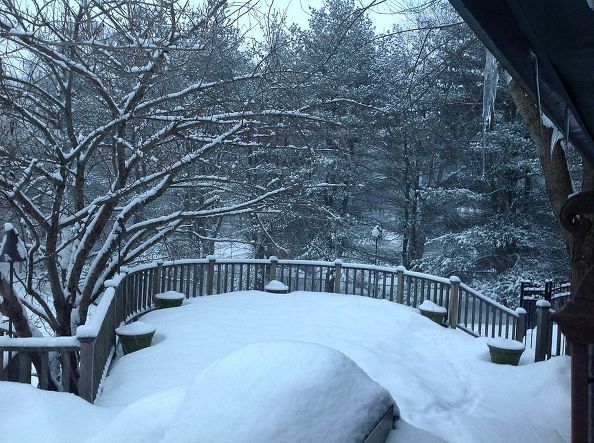
Backyard Upgrades: As you learn the best ways to enjoy your deck and patio during winter, it’s a great time to ponder what changes you’d like to make for spring.
And it’s okay if you have no idea how to look through snow and plan for spring. The key is: design/build experts do know and they can help you see through winter to spring.

